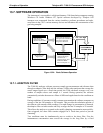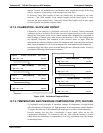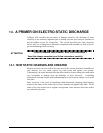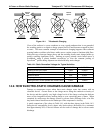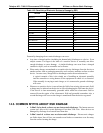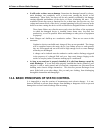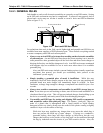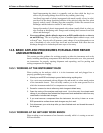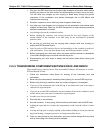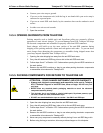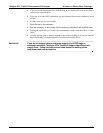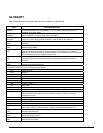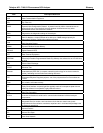
A Primer on Electro-Static Discharge Teledyne API - T100 UV Fluorescence SO2 Analyzer
322
liquid impregnating the plastic is eventually used up after which the bag is as
useless for preventing damage from ESD as any ordinary plastic bag.
Anti-Static bags made of plastic impregnated with metal (usually silvery in color)
provide all of the charge equalizing abilities of the pink-poly bags but also, when
properly sealed, create a Faraday cage that completely isolates the contents from
discharges and the inductive transfer of static charges.
Storage bins made of plastic impregnated with carbon (usually black in color) are
also excellent at dissipating static charges and isolating their contents from field
effects and discharges.
Never use ordinary plastic adhesive tape near an ESD sensitive device or close to
an anti-ESD bag. The act of pulling a piece of standard plastic adhesive tape, such
as Scotch
®
tape, from its roll will generate a static charge of several thousand or even
tens of thousands of volts on the tape itself and an associated field effect that can
discharge through or be induced upon items up to a foot away.
14.5. BASIC ANTI-ESD PROCEDURES FOR ANALYZER REPAIR
AND MAINTENANCE
This section provides guidance for working properly at either the instrument rack or the
bench, including transferring components back and forth between the two. Also presented
are instructions for properly opening shipments and unpacking, and for packing and
sealing components for shipping
14.5.1. WORKING AT THE INSTRUMENT RACK
When working on the analyzer while it is in the instrument rack and plugged into a
properly grounded power supply.
1. Attach your anti-ESD wrist strap to ground before doing anything else.
Use a wrist strap terminated with an alligator clip and attach it to a bare metal portion
of the instrument chassis. This will safely connect you to the same ground level to
which the instrument and all of its components are connected.
2. Pause for a second or two to allow any static charges to bleed away.
3. Open the casing of the analyzer and begin work. Up to this point, the closed metal
casing of your analyzer has isolated the components and assemblies inside from any
conducted or induced static charges.
4. If you must remove a component from the instrument, do not lay it down on a non-
ESD preventative surface where static charges may lie in wait.
5. Only disconnect your wrist strap after you have finished work and closed the case of
the analyzer.
14.5.2. WORKING AT AN ANTI-ESD WORK BENCH
When working on an instrument of an electronic assembly while it is resting on an anti-
ESD work bench:
06807C DCN6650



